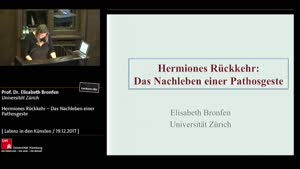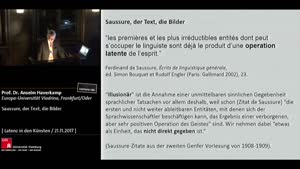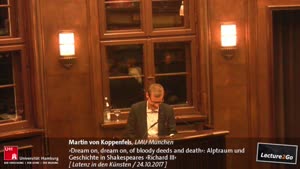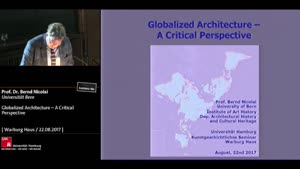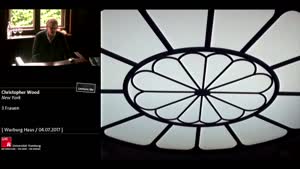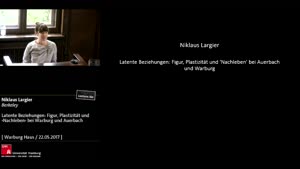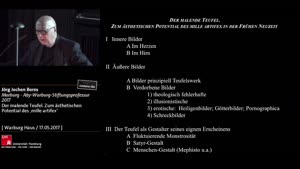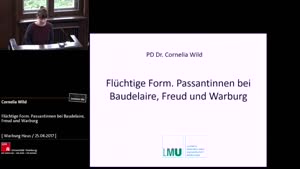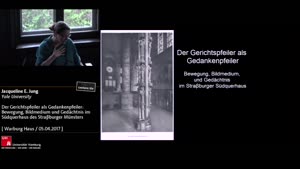Der Gerichtspfeiler als Gedankenpfeiler: Bewegung, Bildmedium und Gedächtnis im Südquerhaus des Straβburger Münsters - Jacqueline E. Jung - Universität Hamburg
- Lecture2Go
- Videokatalog
- F.5 - Geisteswissenschaften
- Kulturwissenschaften
- Warburg-Haus (2017)
Videokatalog
Der Gerichtspfeiler als Gedankenpfeiler: Bewegung, Bildmedium und Gedächtnis im Südquerhaus des Straβburger Münsters
Jacqueline Jung lehrt als Associate Professor am Department für Kunstgeschichte der Yale University europäische Kunst und Architektur des Mittelalters. Die Forschung zur figürlichen Skulptur in Deutschland und Frankreich bildet dabei ihren Schwerpunkt. Ihr Buch ‚The Gothic Screen: Space, Sculpture, and Community in the Cathedrals of France and Germany, ca. 1200-1400‘ (Cambridge University Press, 2013), wurde mit dem Prose Award für Kunstgeschichte und Kritik der Association of American Publishers ausgezeichnet sowie mit dem John Nicholas Brown Preis der Medieval Academy of America. Jungs neues Buch, ‚Eloquent Bodies: Movement, Expression, and the Human Figure in Gothic Sculpture‘, erscheint bei Yale University Press. Ihre Texte wurden in zahlreichen Zeitschriften und Sammelbänden in den USA und Deutschland publiziert; zudem hat Jung bedeutende deutschsprachige kunsthistorische Arbeiten, etwa Aloïs Riegl’s ‚Historische Grammatik der bildenden Künste‘ (Zone Books 2004), in englischer Übersetzung veröffentlicht.
Long mediated by a few highly artificial photographs made in the 1920s, the monumental Pillar of Judgment (a.k.a. Pillar of Angels) in the thirteenth-century south transept of Strasbourg Cathedral has come to be understood as a fairly straightforward, if singular, example of Gothic religious art – a transposition of conventional Last Judgment imagery, rendered in a transitional late Romanesque/early Gothic style, into a liturgical space. Encounters with the work from natural standpoints on the ground – including the many „hotspots“ of liturgical and judicial action within and beyond the transept – yield entirely different perspectives. Drawing together the various impressions this multifaceted monument presents within its original spatial context, considering the associations it summons up with other works of sculpture known to contemporaries, and teasing out its analogies with the stained glass imagery that alternately illuminates and obscures it, this lecture offers a new understanding of the pillar. Seen in flux, the pillar reveals itself not only as a support for iconography but, even more, as a ‚tool for thinking‘: it prompts reflections about the nature of sacred space, the limits and possibilities of human vision, the flows and ruptures of time, and the ever-presence of the divine in the world.
Jacqueline Jung hat den Wissenschaftspreis der Aby-Warburg-Stiftung 2016 erhalten.

